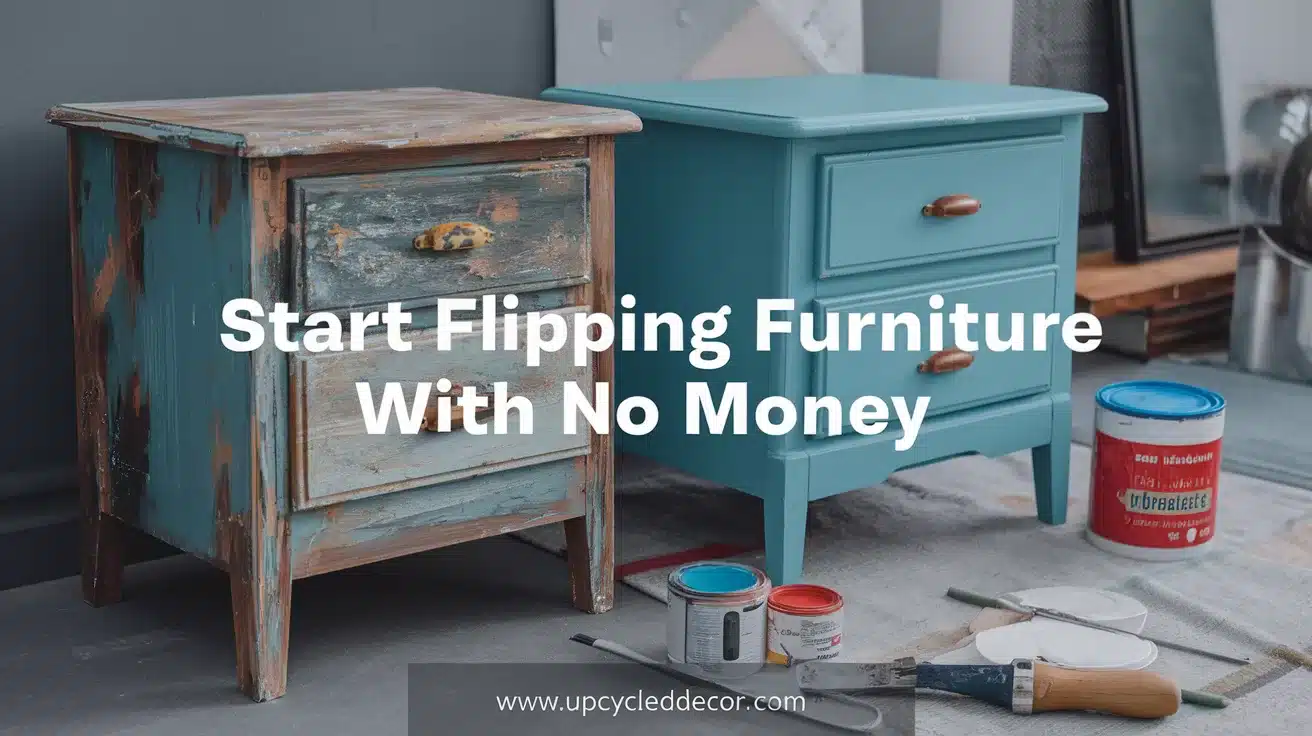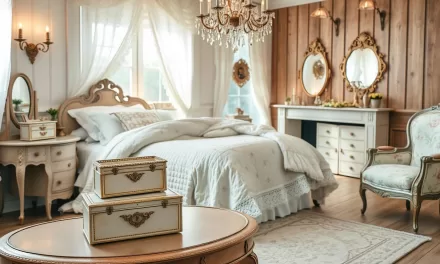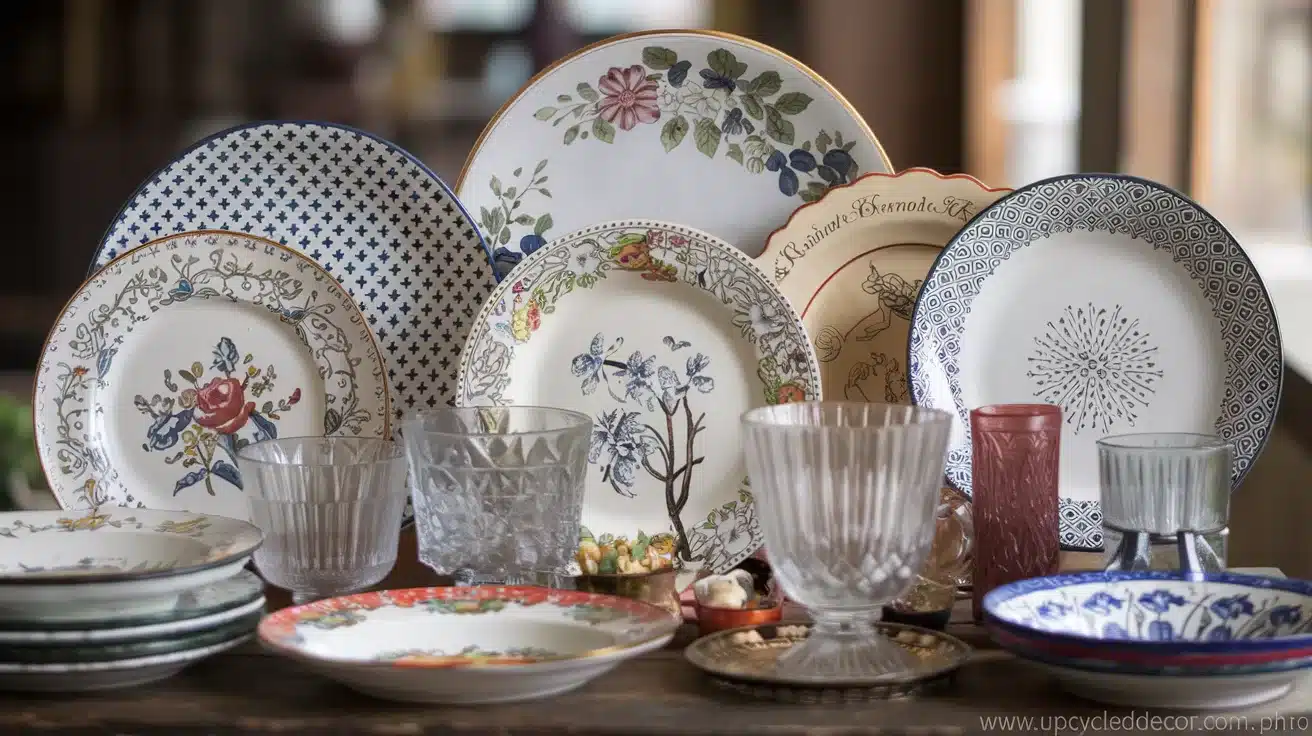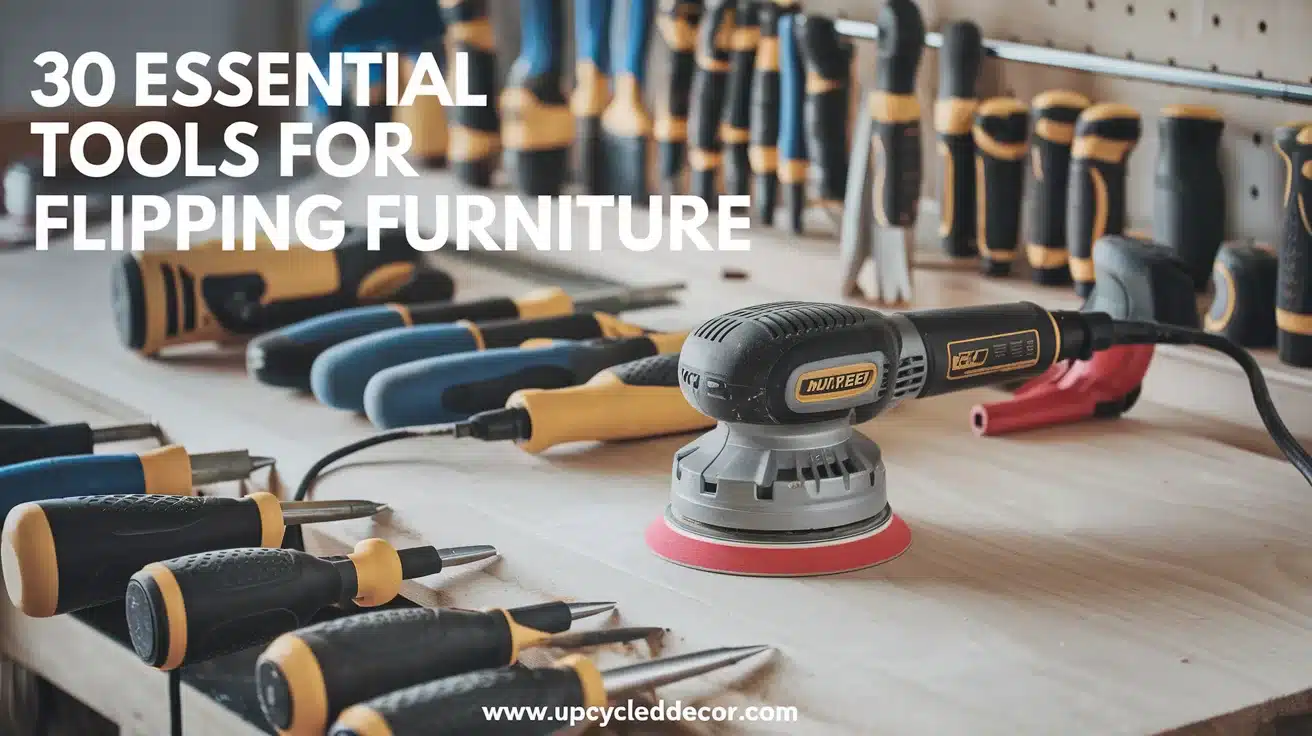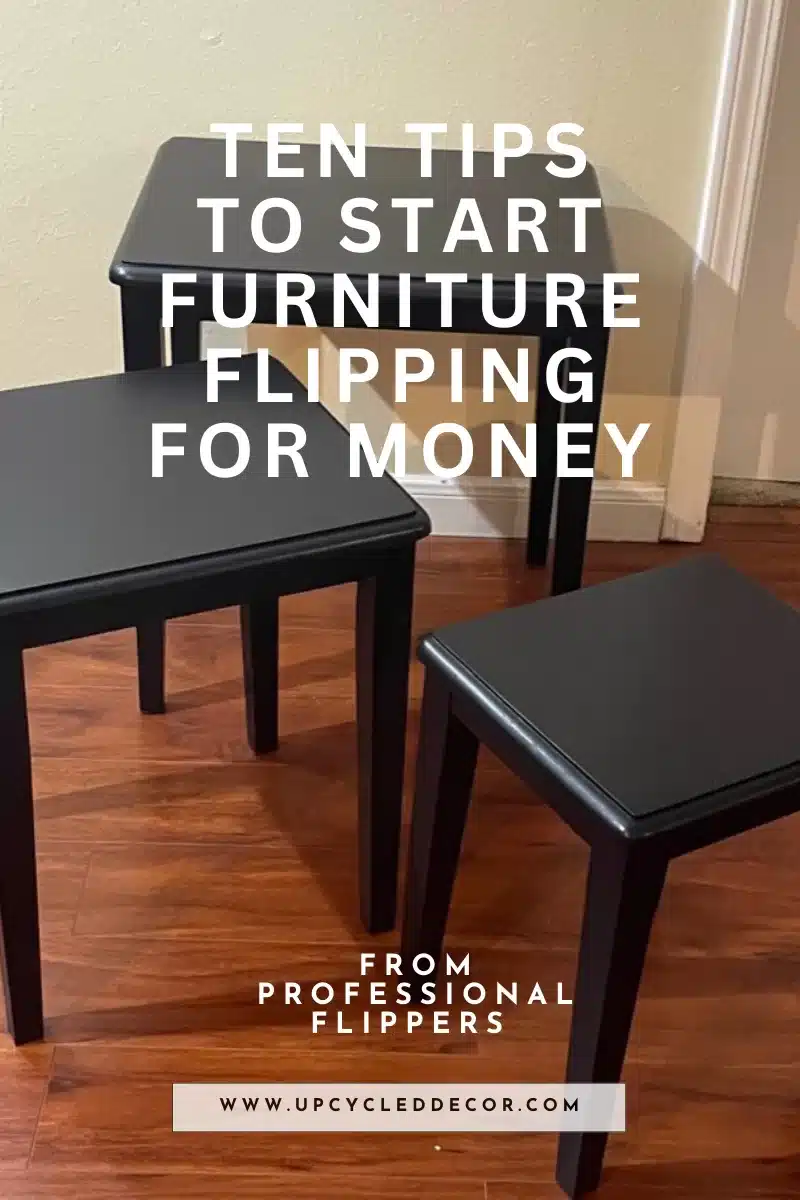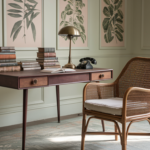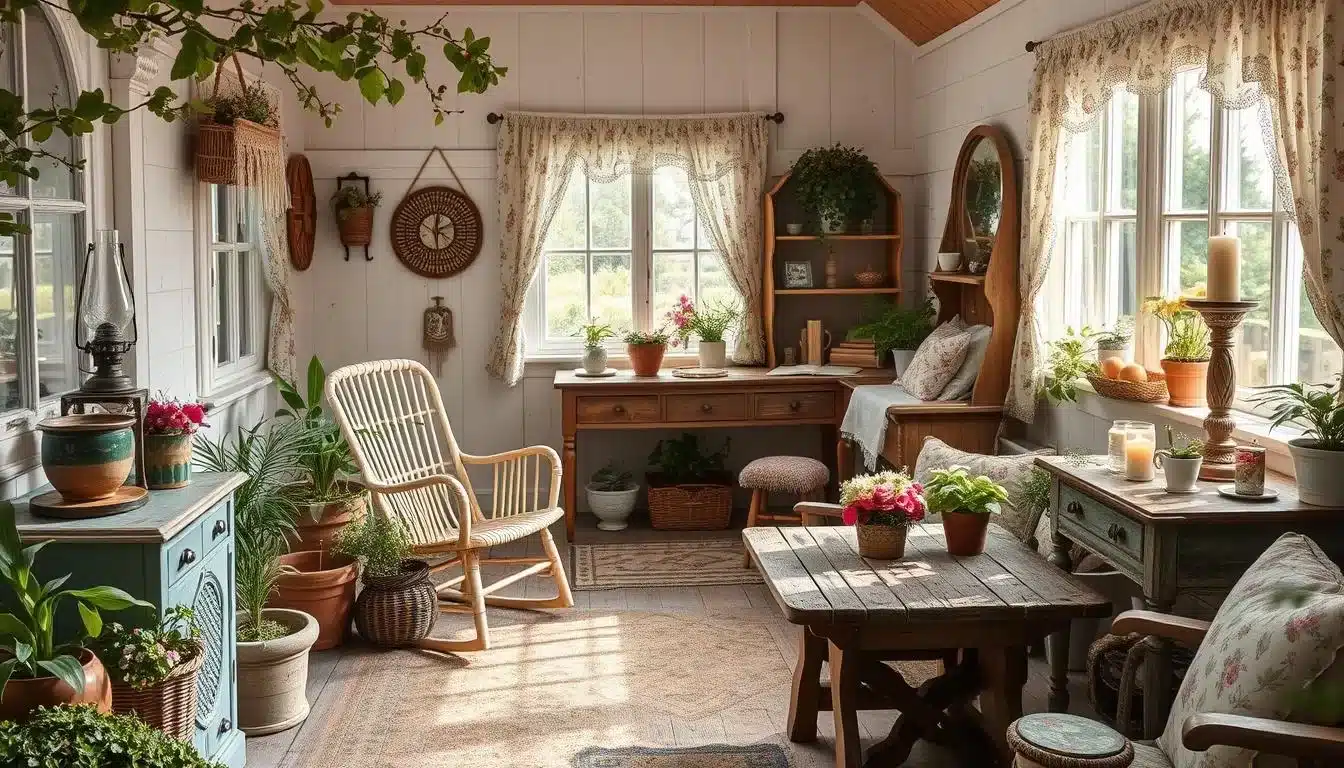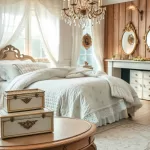This post is about how to start a furniture flipping upcycling business with no money.
This post may contain affiliate links, which means I’ll receive a commission if you purchase through my link, at no extra cost to you. Please read full disclosure here.
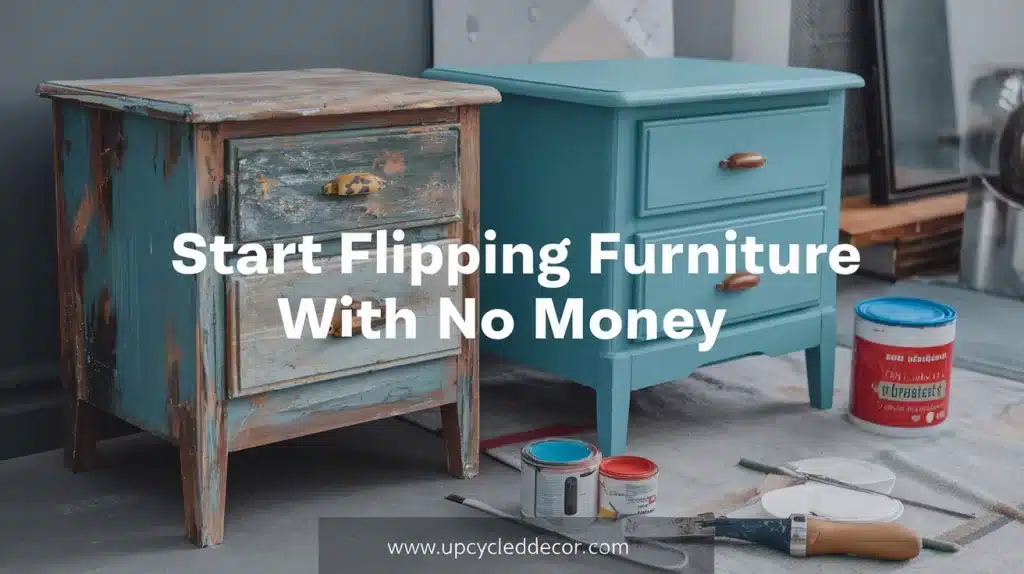
The Flippin’ Fundamentals: how to start flipping furniture for profit
Can you start to make money flipping thrift furniture and
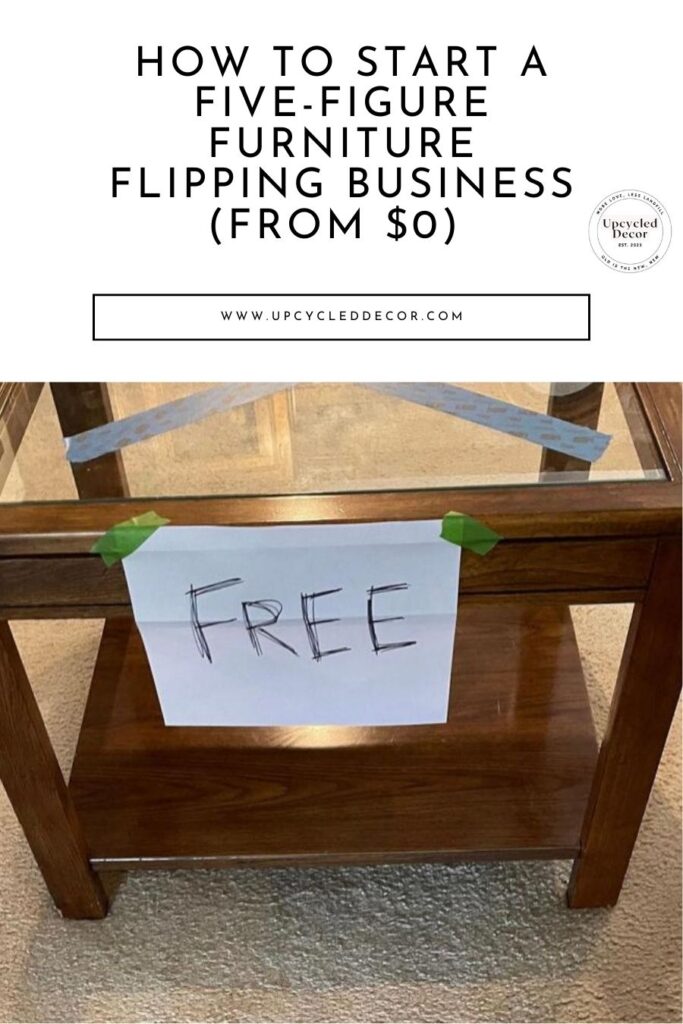
What we’ve learned: how to start an upcycling business from nothing.
Free is often the best price. No surprise here — the best way to get started for no money down is to look around your own house or ask friends and family for stuff they were planning to throw away or donate. If you can get ten or twenty dollars each for a few items listed on Facebook Marketplace, OfferUp or Etsy, well that’s money for nothing, as the song goes. Don’t worry, we’re not stopping at the $10-20 mark. This is to help you start getting noticed by customers, and the platforms.
When we say how to start an upcycling business from nothing, we do assume a few things. Like, you have basic cleaning supplies. Also, you’ll need a decent phone to take pictures with, and internet. It will be much easier if you also have a car. It won’t be impossible without a car but you’ll need to focus on
How to make your first $50 fast when you are flipping furniture and home decor
Honestly, your first $50 should only take 2-3 items max, especially if you find it for free. A pair of chairs that you find for free you can probably get at least $30 if they are in good shape. If not, list them as project chairs, and shoot for $20.
Pro tip: If you have furniture that needs significant work but is unique, a name brand, or otherwise full of potential, you can sell as project pieces. Don’t spend a ton of time restoring furniture in the early stages, when you are trying to make money quickly.
But also, if you’re out looking around on curbs regularly, then eventually you will get lucky. (Actually, not lucky at all, you’re just creating your own opportunities!) You will probably find some wall art, a lamp or something else that you can resell for $50.
Now that said, when you find something great, avoid the temptation to hold onto it until you get the “full price” for it. Right now you are trying to build up a small amount of capital. In fact, learning how to turn over inventory at an appropriate pace is something that will be important at all stages of your business. But you want your cash flow to be positive, and sometimes it’s more important to be getting money in the door at a decent level. So, if you find something that you think you could eventually sell for $150, you might want to sell it right now for $75, or even $50. We’ll turn that $50 into the next $100, or even $200, instead of waiting for that perfect buyer.
By the way, if you’ve already started your furniture flip business and you’re looking to grow your business read our post on how to grow from a few hundred dollars to $10,000+.
How to turn that first $50 into $500.
After you have $50, there are a few options on how to grow your upcycling business to make even more money faster.
Buy supplies that will help you increase the value or work faster.
You’ll need some basic supplies if you want to clean and do small repairs. You’ll need more supplies if you want to sand, paint, or stain anything. But if you keep picking up items for free, then you can pick up a wider variety of items. At first, we suggest just selling items out of your house or from friends and family. Choose items that are ready to go and need no repair or clean up beyond a simple wipe down. Once you have a little cash, you can buy some oops paint (customer rejects at your hardware store) and a decent brush. Then you can paint your next curbside find, and flip them for a bit more.
Buy items to flip: the ROI is often higher than curbside finds.
We had some paint and brushes and basic cleaning supplies already lying around. So we were able to skip additional spending there. If you have basic painting and cleaning supplies, your next step is thrifting! Start with garage sales and thrift stores and began to buy inexpensive items, that make sense for your market. Where to start?
Pairs are perfect. You will probably find that pairs of end tables and night stands are great furniture to flip. (They are usually $10 to $15 at our local thrift stores.) Why? End tables and nightstands are super versatile (an end table can be used as a nightstand and vice versa). They can fit in small and large spaces. Plus, people often just need an extra, inexpensive table for a playroom, a bedroom, or a workspace.
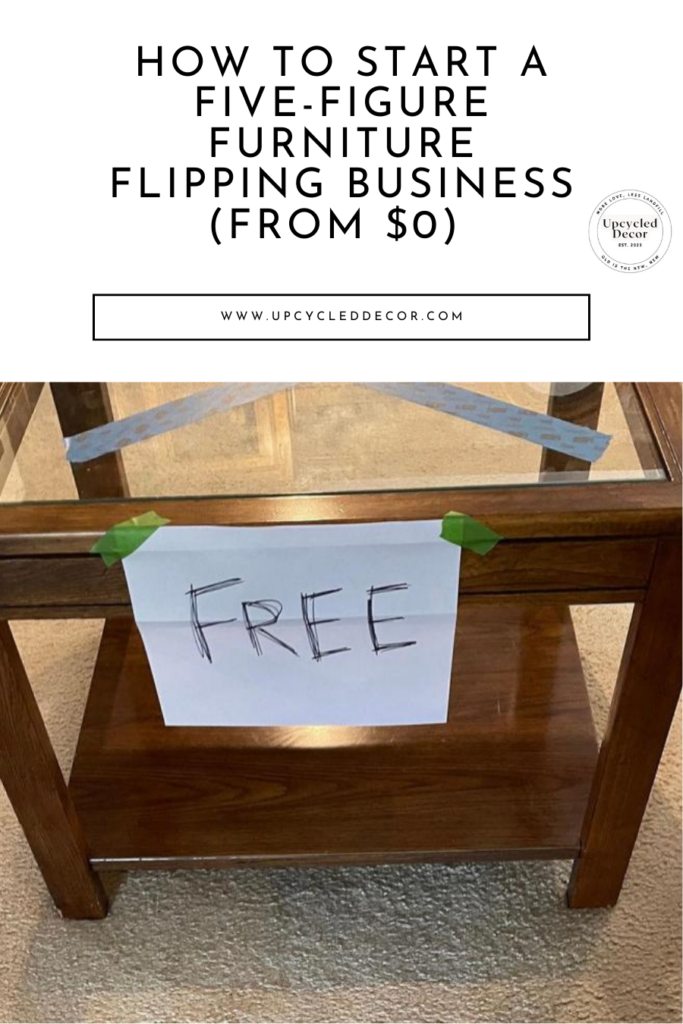
If you want to start a furniture flipping business from nothing, you’ll probably need some free stuff!
Finally, we can fit them in the back of our car, which meant our customers could too. That was one of the first lessons: think like a customer. If you want to know how to start a furniture flipping business with staying power, you need to have a business mindset as soon as possible. If you want to just dabble as a hobby, go for it! But if you want to star making real money fast, you need to be strategic as soon as possible.
Set a target profit goal.
We decided to try to make $20 profit on each item, not including our own time. (Since we were using paint and cleaning supplies we already owned, we didn’t count that either.) We listed most items at $40-45, But, we were prepared to be haggled down to $30-35. And that worked–though not always. And we kept picking up free items whenever we could. We made more than $100 within a week. Hardly retirement money, but enough to put back into the flipping business to take a tiny step up. Another major lesson: it’s never too early to be thinking about a strategy.
If you just want to make a couple hundred dollars a month, go for it. It’s fun and if you aren’t trying to make more than that, it’s pretty easy. But if you’d like to do this for a meaningful amount of cash, or even full time, treat it like a business from the start.
Your first $100: how to start a furniture flipping business.
With our $100 we now felt we had a little wiggle room to experiment with better and different supplies. For example we bought chalk paint because it’s low mess and goes a long way. It also doesn’t require other supplies like primer and strippers. And, we could do it inside, late at night. If you don’t have a backyard or garage, or you live with kids or pets, chalk paint is a good option. We still painted with our latex oops paint whenever possible. But we also bought primer and paint all-in-one (we like Behr Paint + Primer, because it’s affordable and easy to find). Now that we were committed to our furniture flipping business we bought full gallons (before we just bought quarts!).
We soon found that stools sold well in our area. So we increased our purchase budget to $20 (we figured the price of two margaritas was a worthwhile gamble). When we found a pair of two stools for $20 or less, and they were not wobbly, we grabbed them. This is because you can usually repaint simple wooden stools in an hour or less if needed, and sell for about $45 to $50. We increased our profit goal to $30 per sale. Within two weeks, we had made more than $300. (We sold two pairs of stools at $50 each and two sets of nightstands at $60 each, plus a couple of lamps.)
Your first $500: start having a strategy for your furniture flipping business.
Once we had $500, we got more serious about buying items we knew were decent sellers, even if we had to hold them for a little while. We bought a quirky lamp that didn’t sell for three weeks (but it cost $12 and so we didn’t tie up a lot of capital in that hold). Our painting skills were improving so we splashed out for some higher end paint. This helped us to sell at a slightly higher price.
Pro tip: we bought a counterfeit detector pen at around this point. Unfortunately, we were now selling higher priced items and people were beginning to pay us regularly with $50 and $100 bills. To our knowledge we’ve never been burned. But, it felt good to have this. You can be pretty subtle with it and check the note (bill) quickly.
We also began to recognize antique and vintage items and spent slightly more. The secret to how to start an upcycling business is to keep learning. Read blogs, go on YouTube, and most of all, take note of what is selling and what isn’t. We kept everything in a Google Sheet right from the start. Not only did we record the price we paid (and any repairs) but also how long it took to sell. Read up on trends online, but your own sales will be some of your best data.
Pro tip: We tracked everything on a Google Sheet at first, but then we pretty quickly moved to Airtable for inventory management and Vendoo for listing on multiple marketplaces.
Now, you can start investing in the business.
Then we started to shop more — but we reimbursed ourselves for gas, which was our biggest expense. Next, we identified three thrift stores as our go-to places for furniture and
We also opened a dedicated business bank account for Zelle and Venmo payments to deal with income taxes. We are not tax experts but you probably will be shocked at how soon you have to start paying taxes! Related, we started using the business account debit card for as many expenses as possible, so that now the business was pretty much self-funded. In our case, we had actually made $500 profit by the end of our first month (off about $800 in total sales). We also began to track our expenses, and we had spent about $200 on expenses. We were definitely learning how to start an upcycling business on the go, but some of these lessons were really valuable.
Why not just keep the profits?
You can keep the money, of course. But we knew early on that we were hooked. And that first $500 was a very modest investment into what was quickly becoming a business. And we soon learned to stretch that $500 with thrift store purchases, garage sale finds and estate sale bargains. That was actually a game changer for us. What happened then. . .you can read about the growth of our furniture flipping business from hundreds of dollars to thousands of dollars in this post.
This post is about how to start a furniture flipping upcycling business with no money.

